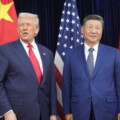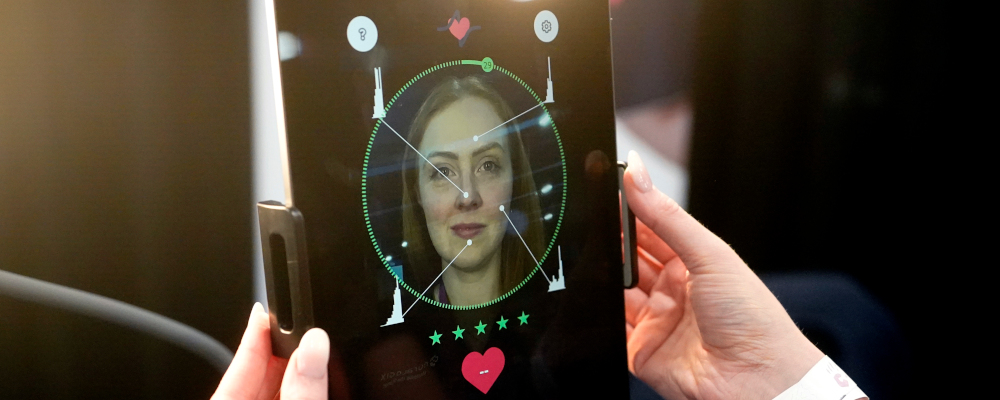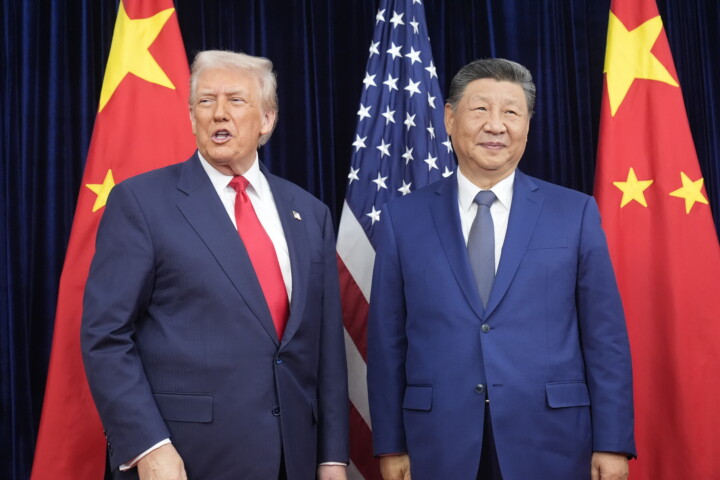This article is the first installment in a four-part series, “Hope in Health Care“, exploring how we can modernize and adapt our health systems for the future.
Where have you gone, Harold Johns?
For some (including Simon & Garfunkel), it’s Joe DiMaggio. For others, it might be Jean Beliveau, Julie Andrews, or Rosa Parks. Whether you lived in the era or not, you likely regard the mid-twentieth century with some romanticism—and its cultural figures with heroic esteem. The age of moonshots and microwaved dinners was a moment of transition and growth, while also being a time of boundless optimism. The world moved in giant steps. And almost everyone appeared convinced that, if given the chance, they could keep up.
In one corner of our country, an enterprising physicist by the name of Harold E Johns was convinced that Canadians could beat cancer. And then he proved himself right.
While the Tommy Douglas types were mapping out the future of health-care administration, big brains such as Johns were overhauling medical science itself. More specifically, Johns and colleagues at the University of Saskatchewan were doing pioneering work in the emerging field of radiation therapy. They channeled a frenzy of activity in nuclear research into the first ever accurately calibrated dose of a life-saving treatment. In 1951, a Saskatchewanian mother of four with cervical cancer became the first patient in the world to benefit from this breakthrough. She lived another 47 years.
In his harnessing of a novel science, Johns turned technological uncertainty into something truly wonderful. He stood on the precipice and saw the mountain peaks ahead. He did something that brought hope and healing to an estimated 70 million patients across the globe. And in the decades that followed, countless successors have built on the legacy of Johns and others by forging further breakthroughs in radiation therapy, advancing the field far beyond its position in 1951.
And, thus, in our own moment of rich technological potential, with a mix of nostalgia and confidence, our health-care leaders might ask: Where have you gone, Harold Johns? Or, perhaps more appropriately, what should we be doing to support the “Johns-ians” among us today? What would Harold Johns do amid lively debates on artificial intelligence in health care, for example? What support would he need to bring his ideas from the laboratory into patient care?
On the issue of AI in health care, I’d like to think that Johns would be bullish on the convergence of new technologies and public policy. I think Johns would find common cause with present Canadian luminaries David Naylor and Geoffrey Hinton (yes, that Geoffrey Hinton) who suggested in 2018 that appropriately managed deep learning had the potential to transform health-care delivery (although Hinton has since added cautionary notes to his earlier championing). I think Johns, backed by a lifelong commitment to higher education, would encourage our generation of researchers to do the hard work of seeking and scaling the next mountain range, yet again making Canadian science and technology a marvel of the medical world.
Of course, one could (and should) argue that this call to action is more than a mere thought experiment. It’s, for many, a present reality. At the University of Toronto, where Johns founded the Department of Medical Biophysics following his time in Saskatchewan, there are already researchers setting the pace for AI in health care, testing interventions such as the use of patient voice and machine learning to diagnose disease. At the Princess Margaret Cancer Centre, another organization shaped by Johns’ legacy, researchers are finding ways to leverage data and digital technologies to enhance triage and better match patients with clinical trials. More broadly, AI is proving to be a valuable tool for improved detection of breast cancer as well as enhanced risk assessment for pancreatic cancer, among various other promising interventions.
In other words, Harold Johns hasn’t gone anywhere. His pioneering spirit remains central to Canadian health research and technology.
But, is an ethos of transformation also evident as we migrate from science and technology to public policy? What happens when one moves from academic journals to venues of care for patients? Are we getting the full benefit of technological progress in our day-to-day experiences of health care? Are health-care policymakers responding to the complexities of AI with creativity or constraint? If the latter, which policymakers are willing and able to roll up their sleeves and break through the (ana)log jam? After all, what would Johns have done if then Saskatchewan Premier Tommy Douglas didn’t do the tedious work of prioritizing cancer care; or if the Leslie Frost government in Ontario hadn’t established the Ontario Cancer Institute? What if the vigor of technologists wasn’t met with the thoughtful planning of our political leaders?
Folks smarter than I have observed that data readiness, valid concerns around inequities, regulatory frameworks, and human resources—among other factors—can slow the progress of AI in health care across Canada. Indeed, predictions of AI-type technologies significantly reducing health human resource pressures are now decades old, yet parts of our health system are lacking in their propensity to adopt latest and greatest technologies—contributing to stories of long wait times and burnt-out health-care providers. So, it’s fair (and understandable) to say that our systems have room for improvement. And it’s also fair to say that fundamental governance changes in the midst of a technological inflection point are difficult to navigate.
And therein lies the rub. Health-care policy systems that aren’t already purpose-built for transformation—that have yet to make a habit of developing, assessing, adopting, and scaling technological innovation, as well as its various supplements (e.g. high-quality data, and agile training programs)—are at risk of not fully capturing the enormous potential that is AI in health care. Our current policy ecosystems may become disoriented—to the point of static—if mega-opportunities, including but not limited to AI, are not systematically calibrated with our rightly complex health-care institutions.

In the case of AI in health care, some important first policy steps toward such alignment could include: credentialing that results in better training for health-care professionals in the use and management of emerging technologies; acceleration of electronic health implementation in a way that makes data voluminous, higher-quality, and more usable across providers; greater resourcing and scaling of localized problem-solving; and creating increased capacity within administrative apparatuses for true value-based procurement—inclusive of more rapid assessment and adoption of leading-edge technologies. If we can capitalize on these reforms (as starting points), we will continue to foster an environment where health-care entrepreneurs can thrive, and where patients can get the best care in the world.
So, for every ounce of legitimate public policy reactiveness and administrative complexity we inject into our health-care systems across Canada, we should inject equal parts public policy foresight. We should view an “AI in Cancer Care Moonshot” not as a possible science-fiction title, but as a practical necessity. As often as we query provincial comparisons on wait times, we should ask which province will lead the country, or even the international community, in defining the future of medical technology. The impulse toward this kind of virtuous competition is discernable in initiatives like Ontario’s Innovation Pathway, or Alberta’s new Chair in AI in Health, or Nova Scotia’s Health Innovation Hub. But more is needed. Fast.
For the past three years, many of us have felt a degree of anxiety about our health-care systems. We’ve tried to avoid getting sick. We’ve strained to hold up frayed processes of diagnosis and treatment. And we’ve grown exhausted sorting facts from fiction in popular medical discourses.
Yet, there is another path. A more positive and aspiring path. A path that is both newer, and older. It’s the Harold Johns path.
Recommended for You

Trump, the rise of China, and AI—what stories from the last 25 years will stand the test of time?

Canada will attempt to join the EU and Justin Trudeau becomes a Katy Perry lyric: The Hub predicts 2026

The oilsands have created a different kind of oligopoly

‘We need ‘a growth mindset’: How energy innovation can drive prosperity while lowering emissions



